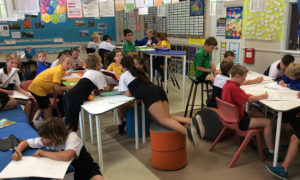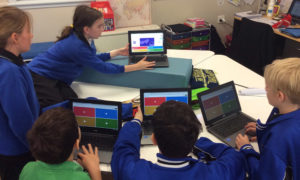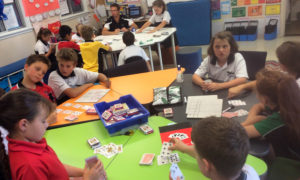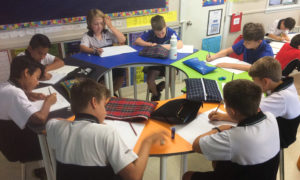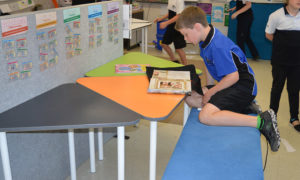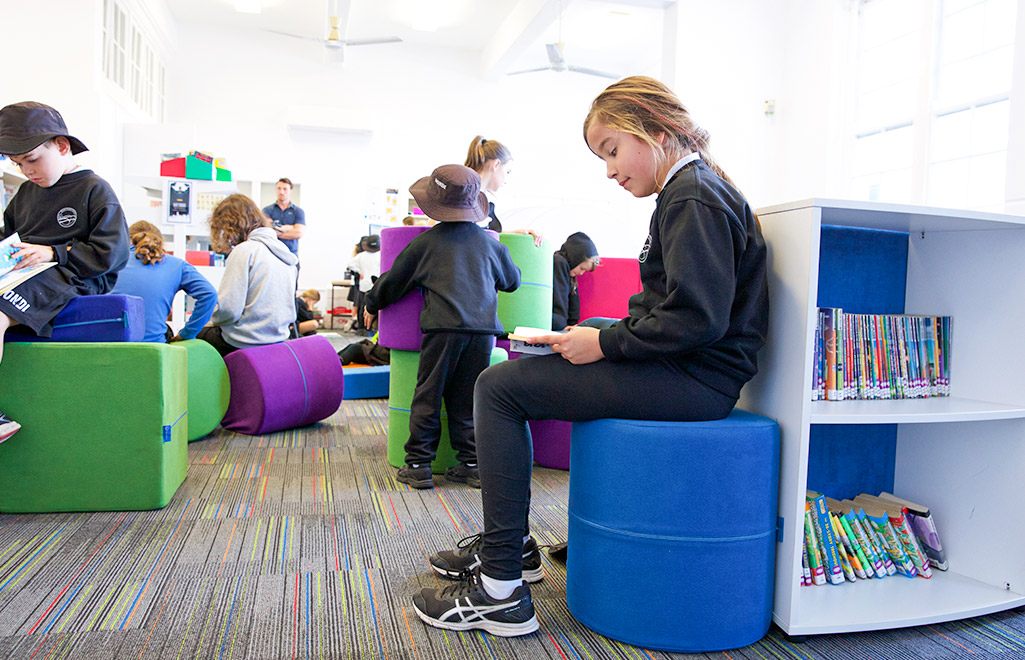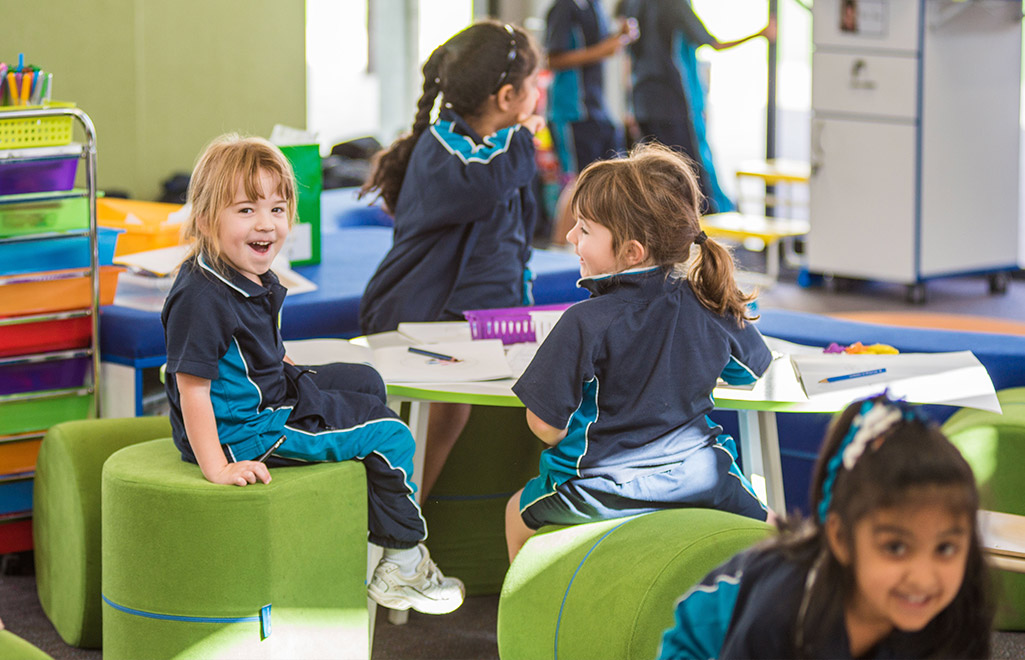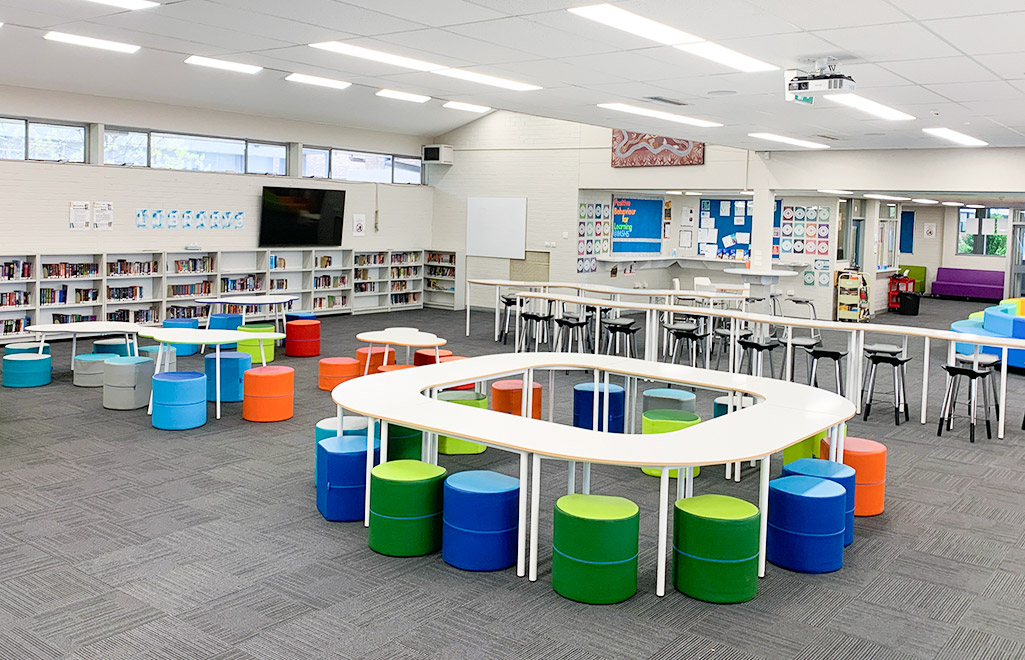Our Design Process
Research
Can Beparta furniture support student learning and engagement?
People intuitively feel that flexible, future-focused, comfortable furniture should lead to greater student engagement … but is this really true? Beparta decided we can’t just rely on guesses; we need actual research.
We approached world-leading researchers Associate Professor Wesley Imms from the University of Melbourne and Dr Julia Morris from Edith Cowan University to help us find the answer to this question. In cooperation with the wonderful team at Vasse Primary School in WA, we’ve been working together on a multi-year academic research project.
Read more about Associate Professor Wesley Imms, Dr Julia Morris, and Vasse Primary School.
Why is this research needed?
In the existing literature, furniture is identified as playing a role in innovative learning environments, but that role is rarely explored in detail. There are studies on the design and ergonomics of furniture, but there aren’t many studies specifically measuring how furniture impacts students’ experiences in flexible classrooms.
Associate Professor Imms and Dr Morris’ research aims to do just that – explore the under-researched question of how furniture impacts student engagement and learning, and Beparta is proud to contribute!
This research is highly relevant, because about ¾ of all school students in Australia and New Zealand are still learning in traditional classrooms and do not have access to flexible furniture or innovative spaces like the ones created by Beparta. Traditional classroom layouts and furniture reflect the ideas about students and education from the late 1700s, the time of the Industrial Revolution. Read more here.
How is the research being done?
The research is being done in co-operation with Vasse Primary School, an Independent Public School near Busselton, in the south west of Western Australia.
Phase One research was conducted across 5 classrooms using an A-B-A withdrawal design, throughout Terms 2, 3 and 4 of 2019.
Teachers and students started off with their usual furniture arrangements, some classrooms using traditional furniture, some classrooms using Beparta’s innovative, flexible furniture. This allowed the researchers to establish a ‘normal’ baseline for the class.
The following term, traditional classrooms used Beparta’s furniture and classrooms that had flexible furniture swapped to traditional furniture. The teachers and students all remained the same, so the change in furniture could be studied. One classroom made no changes at all, acting as a ‘control’ in the research.
Finally, for Term 4, the classrooms went back to their ‘normal’ furniture arrangements.
During Phase One, every 3 weeks, students answered questions about how engaged they had been and took a photo of their favourite piece of furniture. Also, every 3 weeks, a school-based researcher observed teaching, providing a more objective assessment of teaching practices. At the end of each term, teachers completed Teacher Mind Frame surveys and participated in semi-formal interviews around ‘high-impact’ teaching strategies.
Beparta would like to really thank everyone at Vasse Primary School for their help in this research!
Phase One Results
Students believe Beparta’s flexible furniture helps them learn better.
Of the 300 students in Years 3 to 6, around 93% said flexible furniture helped them learn better.
In selecting furniture to use, students were particularly concerned with:
- 54% Comfort
- 11% Flexibility
- 6-7% a wide range of issues such as height, freedom of movement, colour and portability
Comments by students on particular pieces of furniture included:
Circular tables:
‘You can communicate with your peers when doing activities’
‘it’s more collaborative.’
Writable surfaces:
‘You can draw on the table and use it for working out instead of wasting paper’
‘you don’t have to get a whiteboard from the shelf.’
Soft seating generally:
‘you can sit enny [sic] way on them’
‘If I am feeling fidgety I can rock on it.’
‘on soft things I’m more focussed’
‘I move less.’
‘It is easy to carry and use.’
‘It is more comfy and it helps me concentrate.’
Phase One results
Observers note flexible furniture facilitates more student-centred pedagogies.
Classroom observations were able to clearly show that in classrooms with Beparta’s flexible furniture, teachers spent more time using student-centred pedagogies, but in traditional classroom spaces, those same teachers spent more time using teacher-centred pedagogies.
Observers also noticed that in flexible spaces, more time was spent on small group activities, whereas traditional furniture led to more whole class activities.
Reflecting on their experiences, most teachers also noted that flexible furniture allowed for greater flexibility in their teaching. Teachers also remarked on the increased collaboration between students and between students and teachers in flexible learning spaces:
‘…the flexible furniture allowed me to teach more flexibly, aligning student-to-student, making groups to suit tasks, that sort of thing.’
Also:
‘The kids worked more efficiently when they had choice where to work, who to work with … That made my teaching easier, I could use my time to engage with the students, not me pushing content down their throat from the front of the room.’
Phase One results
Teachers believe flexible furniture improves teacher/student relationships and trust.
The only statistically significant insight to emerge from Teacher Mind Frames surveys was that when using flexible furniture, teachers were more likely to agree that “I build relationships and trust”, which is a fascinating insight!
Phase One results
Beparta’s flexible furniture helps lower teacher workloads.
Interestingly, teachers consistently noticed that Beparta’s flexible furniture made their workload easier, whereas teaching in a traditional classroom required more preparation time and teaching effort.
Teachers reflected on their experience moving from a flexible classroom to a more traditional space:
‘It was a lot more work for me. I had to prepare for one-on-one instruction, I couldn’t use the students’ peer feedback with each other to facilitate, spur on learning.’
Another teacher said:
‘The more traditional room increased my workload … I lost the efficiency of students working collaboratively …’
A teacher explained:
‘Preparation had to be more specific. I noticed a quite different type of learning from the students, more process and skills, less self-direction, focus, motivation.’
A teacher noted that traditional classrooms:
‘… might be more efficient in terms of covering content – skills and processes. But at what cost? The students worked individually, losing the effectiveness of social skills development, collaboration … so they lost a lot as well.’
